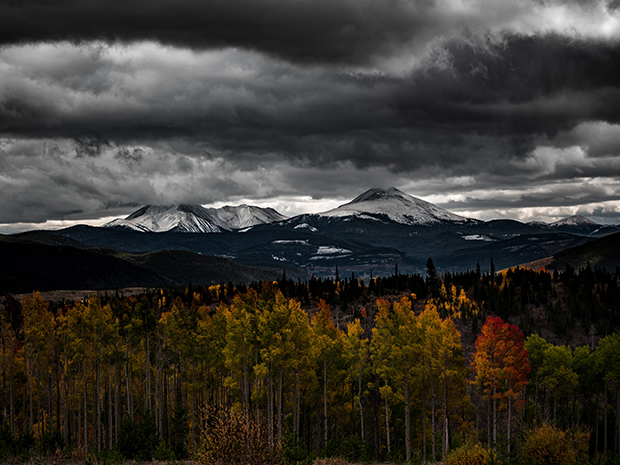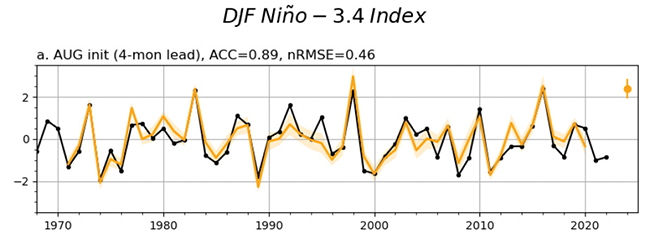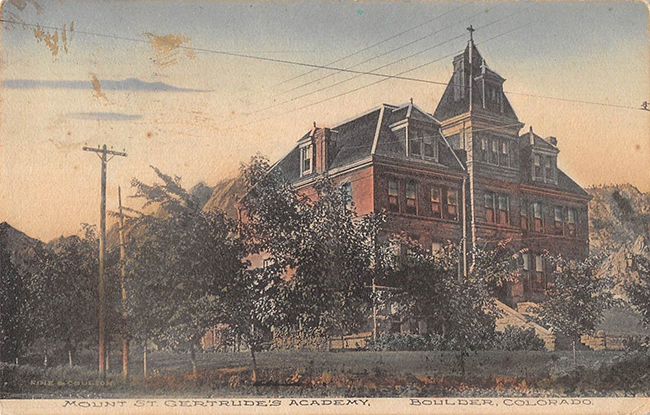Climate Conundrums
04 Dec 2023
Boulder lab predicts ‘Super El Niño’ this winter
By Brad Weismann

Thanks to project scientists like Stephen Yeager at Boulder’s National Center for Atmospheric Research (NCAR), we have a better sense of how climate changes, worldwide.
Utilizing an experimental prediction system, a team at NCAR’s Climate and Global Dynamics Lab determined that a “Super El Niño” weather pattern will affect the Northern hemisphere this winter. If this prediction is accurate, how will this phenomenon impact us? And what can we do to prepare?
“That’s exactly the questions that scientists are now struggling with,” says Yeager. “We sought to solve that question over this winter; to run a bunch of experiments where we take the sea-surface temperatures and run a bunch of atmosphere tests.”
NCAR was founded in Boulder in 1960. Up to that time, meteorology was a largely neglected discipline. Most meteorologists were weather forecasters, and very little research was taking place. With the birth of NCAR, scientists could “attack the fundamental problems of the atmosphere on a scale commensurate with their global nature,” says Yeager.
Now, NCAR is home to many who seek to unlock the mysteries of weather and climate.
One of the many is Yeager, who pursued his natural inclinations in becoming a scientist.
“Science and math always came naturally to me,” he says. “It was something that was easy and that I enjoyed. I was almost an English major—in the end I just liked to be able to take a test and be done with it.”

Although it may seem like weather prognostication is a hit-or-miss affair, especially in unpredictable Colorado, the science is improving all the time. New measurement techniques, rigorous experimentation and more climate-relevant observations are added to the mix, and the result is a more accurate picture of what’s
to come.
NCAR’s project involved the use of “hindcasting.” Instead of working forward into possible futures, hindcasting involves taking historical sets of data and testing them until an accurate mirroring of the actual likelihood of an El Niño took place.
“A hindcast is just like a forecast except you do it in the past,” says Yeager. “You set up everything, and we ask: did our forecast actually check out? How skillful was it?”
The project used a 20-member ensemble (factor) forecast in its study, including new metrics regarding the state of the ocean, sea ice and landforms, as well as the traditional atmospheric measurements. These factors were run in computer simulation repeatedly, using data reaching back to 1970, covering a total of approximately 6,400 years.
“What we do when we do climate forecasts, it’s good practice to run an ensemble; so you tweak the original conditions ever so slightly and then you have a bunch of parallel worlds,” says Yeager. “It gives us the best sense of what will happen and also the best information about uncertainty in
our forecast.”
Once an accurate method of measurement was devised, it remained only to feed current climate data into the “hindcast” system to look forward in time. What the scientists found was surprising. It appears that “El Niño conditions are likely to develop into one of the strongest events on record,” the biggest since the winter of
1997-1998.
According to NCAR, “El Niño events are characterized by warmer-than-average temperatures in the Tropical Pacific Ocean. The phenomenon, which usually peaks in December, can have a significant impact on weather patterns across the country, causing the northern U.S. and Canada to become warmer and drier than usual while the southern U.S. becomes wetter.”
So, what does this mean for us? According to Yeager, there is no definitive answer.
“It is the sort of phenomenon that should make us expect the unexpected in the winter,” he says. “We should be expecting surprises—maybe a winter with no snow, or it could be snowstorms that deliver tons of snow. The warmer air holds moisture, so when we do get a storm, it may be a whopper.”
So, despite the advanced prognostication techniques we have, the weather future is still, literally, cloudy. Coloradans are known for preparing for all possible weather conditions in our rapidly changing environment. The best way to prepare is to be ready for all possibilities.
Some suggestions for those looking to prepare include clearing gutters and downspouts, checking roofs for leaks and checking for stressed trees on one’s property. Families should prepare “getaway kits” filled with necessities for being displaced if the weather overwhelms one’s home.
“We should act not in concern, but in vigilance,” Yeager says.












